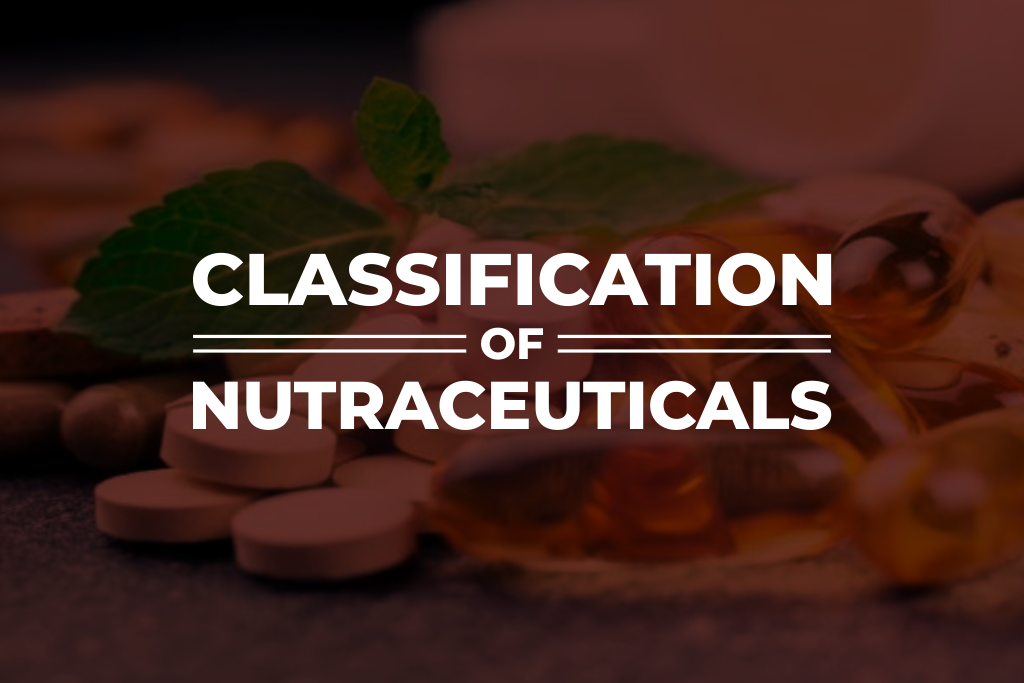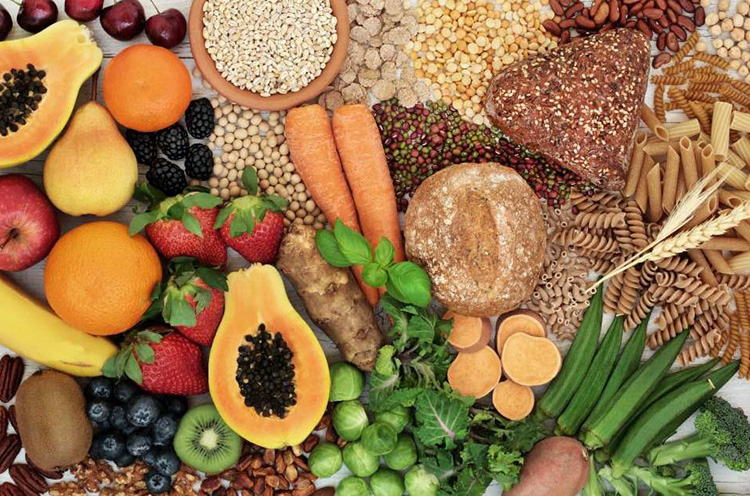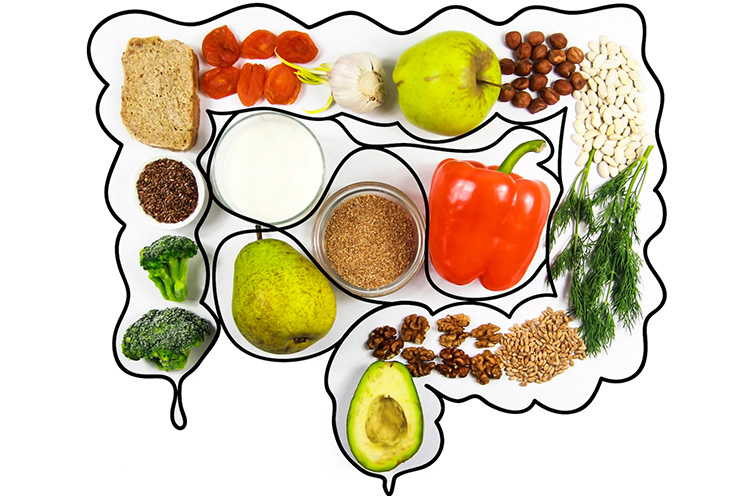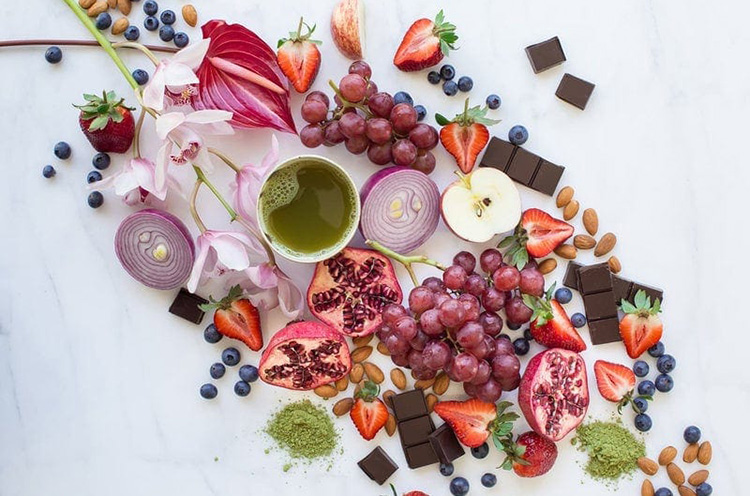
Nutraceutical is the amalgamation of two words Nutrients and Pharmaceuticals. Nutraceutical term has been derived from nutrition which is generally derived from plants or animals and used to provide the physiological benefit in protecting or treating the disease. Before further classification of Nutraceuticals, let us discuss an overview of the Nutraceutical industry in India and across the globe.
According to the joint study report by ASSOCHAM and RNCOS, the Indian nutraceuticals market is expected to reach a value of US$ 8.5 Billion by 2022. In addition, India’s nutraceutical industry is expected to hold at least 3.5 percent of the global market share by 2023. Furthermore, as per Allied Market Research, the global Nutraceutical market is growing at a CAGR of 7.04% and will reach USD 302,306 million by 2022. These results are proof of the rapidly growing nutraceutical industry due to their health benefits.
Now, we will drill down on the various types of Nutraceuticals. The food sources used as nutraceuticals are all-natural and can be categorized as below:
1. Dietary Fiber
Dietary fiber is the food material, more precisely the plant material that is not hydrolyzed by enzymes secreted by the digestive tract but digested by microflora in the gut. In simple words, dietary fiber includes the parts of plant foods your body can’t digest or absorb.
Your body breaks down and absorbs other food components such as fats, proteins, or carbohydrates. However, your body doesn’t digest fiber. Instead, it passes relatively intact through your stomach, small intestine, colon, and eventually out of your body.
Dietary fibers may be divided into two forms based on their water solubility.
- Insoluble dietary fiber: This type of fiber promotes the movement of material through your digestive system and increases stool bulk, so it can benefit those who struggle with constipation or irregular stools. Whole-wheat flour, wheat bran, nuts, beans, and vegetables, such as cauliflower, green beans, and potatoes, are good sources of insoluble fiber.
- Soluble dietary fiber: This fiber dissolves in water to form a gel-like material. It can help lower blood cholesterol and glucose levels. Soluble fiber is found in oats, peas, beans, apples, citrus fruits, carrots, barley, and psyllium.
Water-soluble dietary fiber and dietary fiber & slim biome are some examples of nutraceutical products.

2. Probiotics
Probiotics are live bacteria and yeasts that are good for you, especially your digestive system. We usually think of these as microorganisms that cause diseases. But your body is full of bacteria, both good and bad. Probiotics are often called “good” or “helpful” bacteria because they help keep your gut healthy.
You can find probiotics in supplements and some foods, like yogurt. Doctors often suggest them to help with digestive problems. More examples of food rich in probiotics are unpasteurized sauerkraut and kimchi, miso soup, soft cheese, enriched milk, naturally fermented sour pickles, and sourdough bread. Probiotics and Enzymes, pre-probiotics, probiotics 10, probiotics 20, probiotics are known nutraceuticals.
3. Prebiotics
Prebiotics are dietary ingredients that beneficially affect the host by selectively altering the composition or metabolism of the gut microbiota. Prebiotic consumption helps improve metabolism as it generally promotes the Lactobacillus and Bifidobacteria growth in the gut.
Scientific literature indicates that increasing prebiotic fiber intake supports immunity, digestive health, bone density, regularity, weight management, and brain health. Foods rich in prebiotic fiber are onions, garlic, wheat bread/bran, asparagus, barley, apple with skin, oatmeal, chicory roots, banana, tomato, beans, peas, etc. Pre-probiotic with zinc for children is an example of a prebiotic nutraceutical product.

4. Polyunsaturated fatty acids
Polyunsaturated fatty acids (PUFAs) are also called “essential fatty acids” as these are crucial to the body’s function and are introduced externally through the diet. They are divided into omega-3 (n-3) and omega-6 (n-6) polyunsaturated fatty acids, differing in the first double C-bound position. Studies suggest that omega-3-fatty acids are helpful in cardiovascular diseases as they prevent irregularities in the force or rhythm of the heart and promote the reduction of lipid concentrations in the serum. Furthermore, omega-3-oils are helpful in premature infant health, bipolar and depressive disorders, dysmenorrhea, and diabetes. Sources of PUFA include walnuts, sunflower seeds, sesame seeds, peanut butter and peanuts, flaxseed, poppy seed, and avocado/ olive/ safflower oils. In addition, omega-3 capsules, gels, fish oil are some popular nutraceutical products.
5. Antioxidant vitamins
Vitamins like vitamin C, vitamin E, and carotenoids are collectively known as antioxidant vitamins. Antioxidants are our first line of defense against free radical damage and are critical for maintaining optimum health and wellbeing. In addition, these vitamins act singly and synergistically to prevent oxidative reactions leading to several degenerative diseases, including cancer, cardiovascular diseases, cataracts, etc. These vitamins are abundant in many fruits and vegetables and exert their protective action by free-radical scavenging mechanisms. Some examples of antioxidant nutraceuticals are Vitamin C (immunity booster), Vitamin E (Hair and skin products), and multivitamins and minerals.
6. Polyphenols
Polyphenols are natural phytochemical compounds in plant-based foods, such as fruits, vegetables, whole grains, cereals, legumes, coffee, wine, and cocoa. There are approximately 8,000 different classes of polyphenols, the essential being flavonols, flavones, flavan-3-ols, flavanones, and anthocyanins.
Dietary polyphenols can affect numerous cellular processes like gene expression, apoptosis, platelet aggregation, intercellular signaling, which have anti-carcinogenic and anti-atherogenic implications. Moreover, polyphenols also possess antioxidant, anti-inflammatory, anti-microbial, and cardioprotective activities and prevent neurodegenerative diseases and diabetes mellitus.
Red wine, dark chocolate, tea, and berries are some of the best-known sources of polyphenols. Yet, many other fruits, vegetables, nuts, grains, and spices also offer significant amounts of these compounds. For example, green tea polyphenols are widely used nutraceuticals in the market.

7. Spices
Spices are esoteric food adjuncts that have been used for thousands of years to enhance the sensory quality of foods. As per recent research, dietary spices in their minute quantities have antioxidative, anti-inflammatory, immune-modulatory effects on cells. As a result, they have an immense influence on human health. Moreover, a wide range of spices is beneficial for gastrointestinal, cardiovascular, respiratory, metabolic, reproductive, neural, and other systems. Some spices like turmeric, red pepper, black pepper, clove, ginger, garlic, coriander, rosemary, saffron, cardamom, coriander seeds, basil, and cinnamon are vigorously used in various products because of their benefits. For example, amla, cardamon, cinnamon are used in the immunity booster product Chavanprash.
For more scientific details on Nutraceuticals, please visit the article on the Role of nutraceuticals in human health.
Conclusion:
There is an excellent market for the manufacturers and suppliers of Nutraceuticals because of their proven disease prevention capabilities. In addition, consumers are choosing more Nutraceutical products to maintain overall health and indulge in some self-medication.
At NEWEDGE Overseas, we provide contract manufacturing, branding, packaging, and labeling of nutraceuticals. Kindly contact us for various standard and made-to-order nutraceuticals in demand due to their additional therapeutic value.